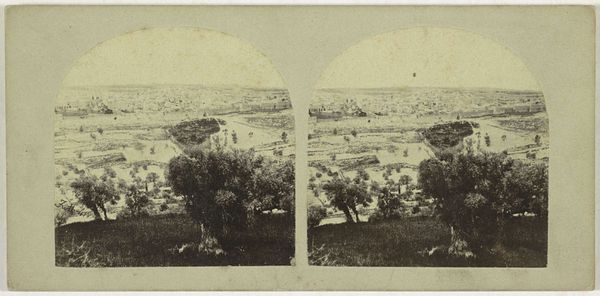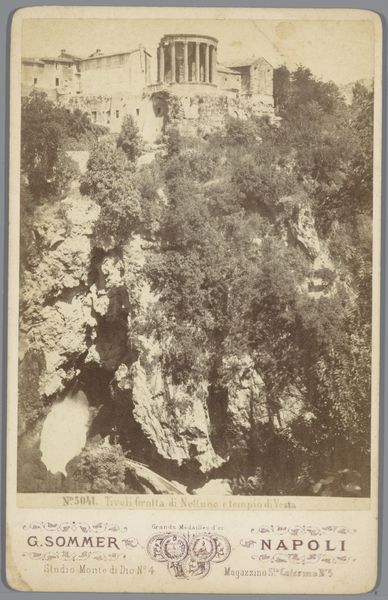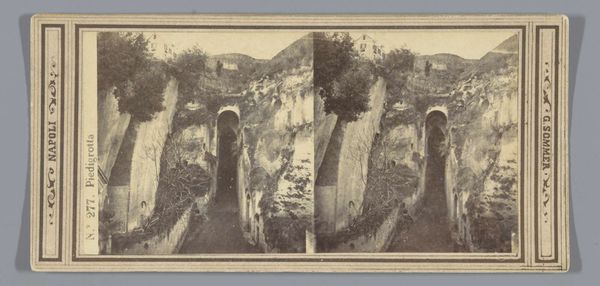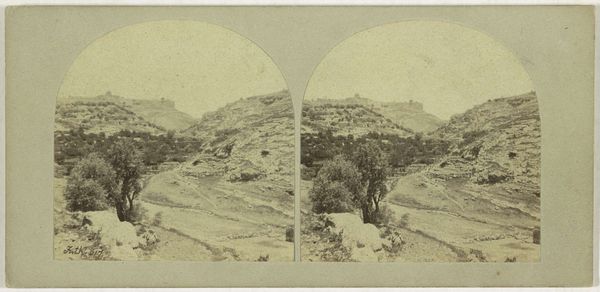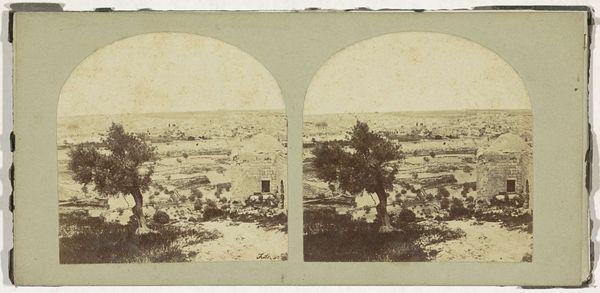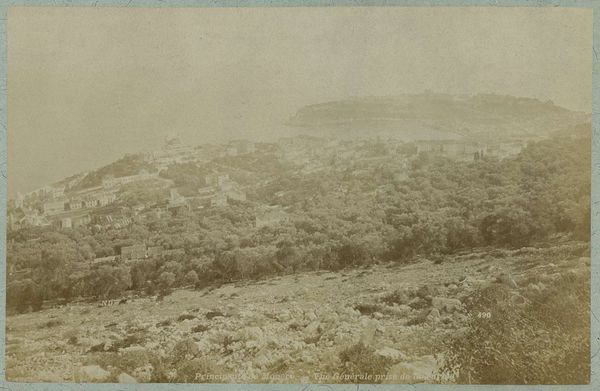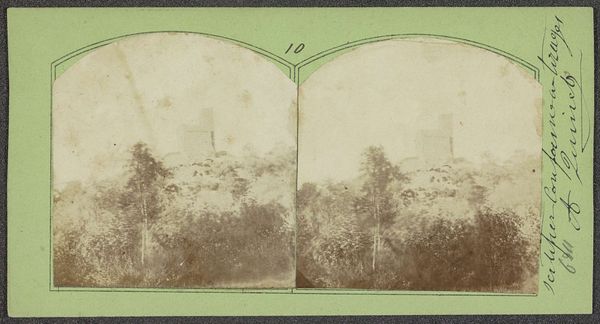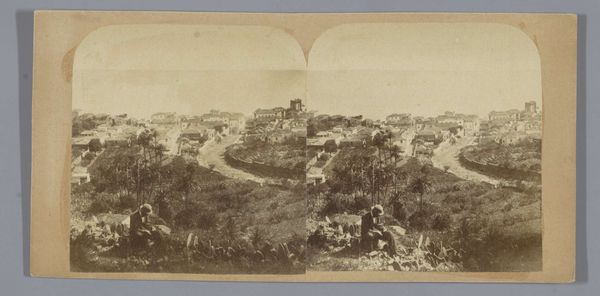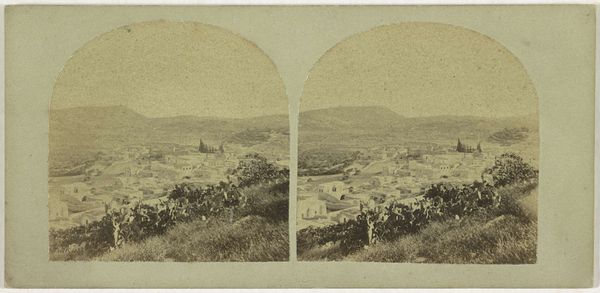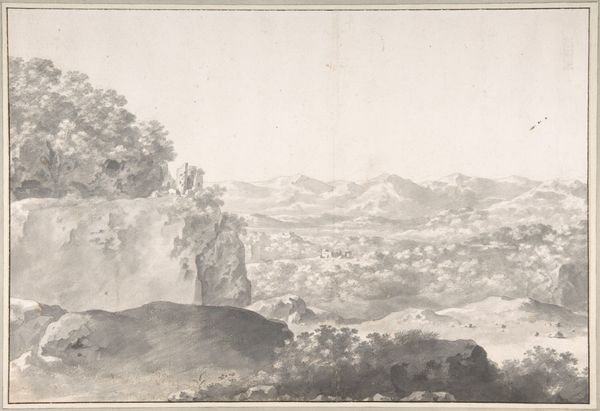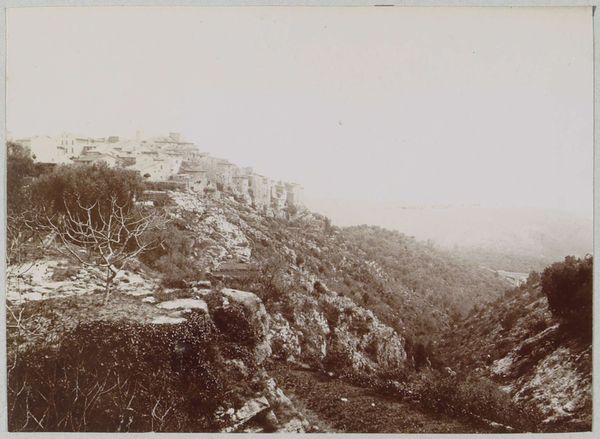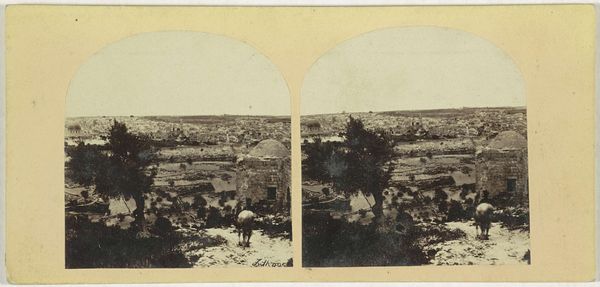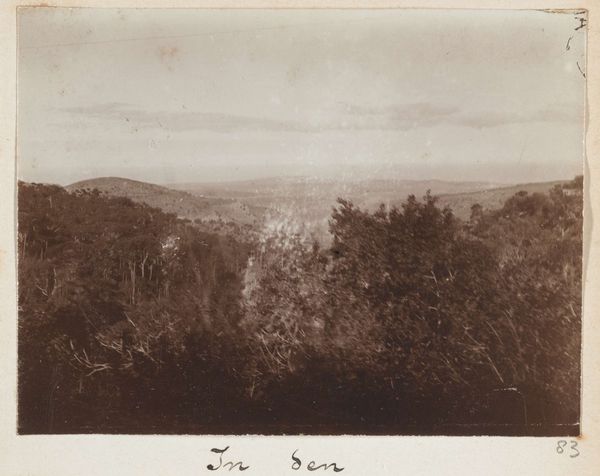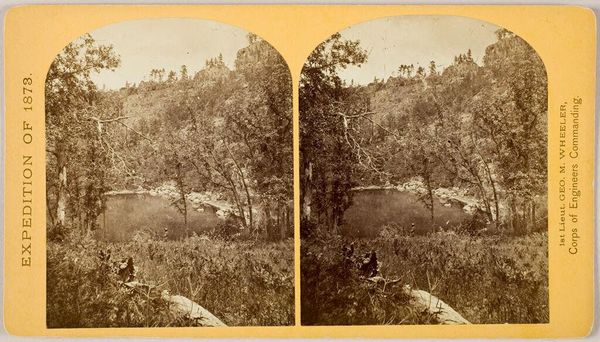
Dimensions: height 73 mm, width 74 mm, height 73 mm, width 67 mm, height 83 mm, width 174 mm
Copyright: Rijks Museum: Open Domain
This is a stereoscopic albumen print of Sorrento, made by Roberto Rive in the 19th century. Using a twin-lens camera, Rive captured two slightly different perspectives of the same scene on a glass negative, printed onto albumen paper, then mounted onto card. The albumen process, invented in 1850, involved coating paper with egg white, providing a smooth, light-sensitive surface. This technique allowed for finely detailed prints with a wide tonal range. Consider how photography, like other reproductive technologies, shifted image-making from the hand to industrial means. These prints were often mass-produced for tourists, feeding a growing demand for accessible, portable images of faraway places. The very act of collecting these stereo cards became a popular pastime, a form of visual tourism enabled by industrialized processes. The artistry lies not just in the composition, but also in the chemistry and the mechanics of production. This photograph blurs the line between art, craft, and industry, reminding us that even seemingly straightforward images are products of complex social and technological forces.
Comments
No comments
Be the first to comment and join the conversation on the ultimate creative platform.
